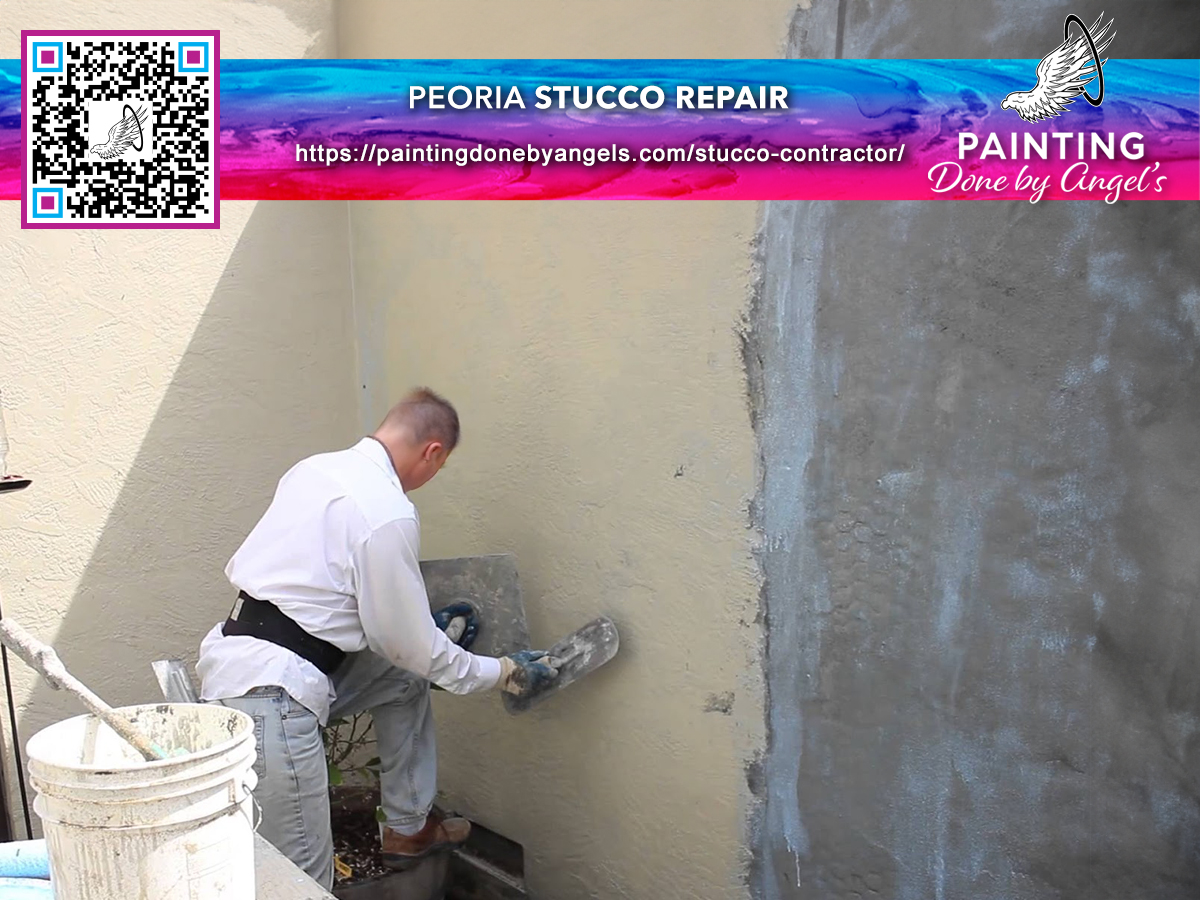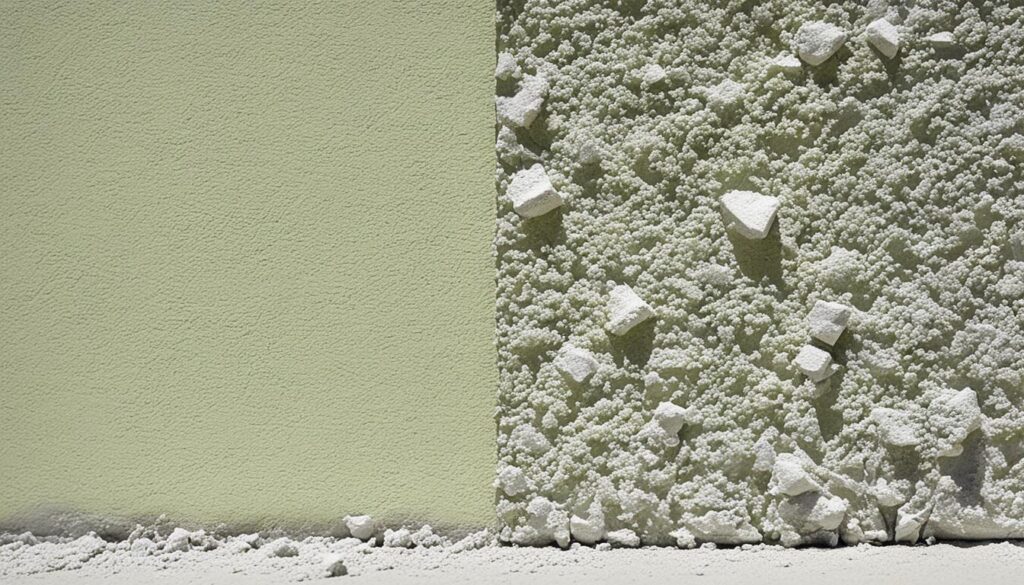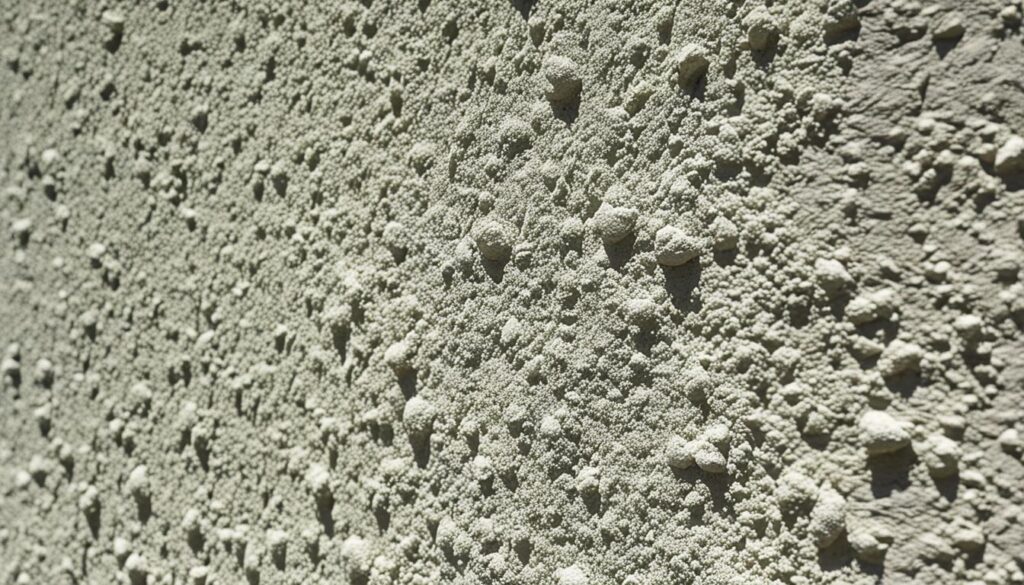
Fixing up your property’s exterior with stucco repair in Peoria AZ is key. It ensures both beauty and durability. Mixing traditional lime-based stucco with modern materials offers top-grade repairs. These repairs withstand weather and time. Learn the best stucco mixing techniques to blend old and new. This assures your building’s facade is perfectly restored. We also cover the ideal mixing stucco ratio. Plus, you’ll get top stucco repair tips for a standout finish.
Key Takeaways
- Understanding the balance between traditional lime-based stucco and modern stucco materials.
- Mastering proper stucco mixing techniques for a lasting stucco repair.
- Learning the importance of an accurate mixing stucco ratio for optimal consistency and adherence.
- Elevating your skills with advanced stucco application tips to achieve a flawlessly textured surface.
- Acquiring localized knowledge for stucco repair in Peoria AZ to address specific regional challenges.
- Gaining comprehensive insights into stucco repair tips to navigate both residential and commercial projects.

Understanding Stucco Mixing Techniques and Materials
The art of stucco mixing techniques combines old traditions and new ideas. Different stucco mixing materials bring many options for beauty and strength. This guide will help you through the basics of mixing stucco. It makes sure you mix stucco the right way, following clear instructions.

There are several types of stucco to consider. Lime-based stucco is breathable and flexible. Cement-based stucco offers strength and lasts a long time. Acrylic stucco, though man-made, keeps its color well and resists weather. Knowing these differences is key for those in building or doing stucco work on their own.
- Lime-Based Stucco – Ideal for historic restorations and traditional finishes.
- Cement-Based Stucco – Suited for modern construction requiring a sturdy finish.
- Acrylic Stucco – Best for color consistency and adaptability to various climates.
Getting the stucco mix right is crucial. You need the right measurements and to follow the mixing instructions carefully. Below is a list of tools needed for a perfect mix:
| Tool | Function | Importance |
|---|---|---|
| Mixer | Ensures uniform consistency | Critical for homogeneous mixing |
| Measuring Devices | Guarantees precise proportions | Prevents material waste and structural issues |
| Safety Gear | Protects against dust and chemicals | Essential for personal health and safety compliance |
Every part of the mix, from water ratio to aggregate type, affects the final stucco. Understanding each ingredient and accurately calculating their amounts is necessary. No matter the stucco type you choose, aim for a mix that sticks well and lasts long.
Stucco Mixing Techniques: A Step-by-Step Guide
Starting a stucco repair project means you need to know how to mix stucco well. Let’s look closely at how to mix stucco properly. We’ll cover the right stucco mixing measurements you’ll need.
First, assess the repair spot carefully. Make sure to clean the surface and remove any loose pieces. It’s also important to moisten the area to avoid the mix drying too fast. This ensures the stucco sticks and cures right.
Choosing the correct type of lime is key for a classic stucco look. Lime helps the stucco stay flexible and prevents cracks. Make sure to pick lime labeled as Type S or SA, as it’s best for modern stucco jobs.
Now, let’s look at the stucco mixing instructions. Below, a table outlines the stucco mixing ratios. These ensure your mix is strong and lasts long.
| Type of Repair | Lime | Sand | Cement |
|---|---|---|---|
| Small Cracks | 1 part | 3 parts | 1 part |
| Large Patches | 1 part | 3-4 parts | 1-1 1/2 parts |
| Full Coat | 1 part | 2-3 parts | 1 part |
To start mixing, first add half of your water to the mixer. Then add sand, lime, and cement. Gradually add more water while mixing until it’s thick like peanut butter. Getting the right texture ensures it sticks well and is easy to apply.
Adding modern materials to lime-based stucco can make it stick better and resist water. Always follow the product guide when mixing these materials for the best outcome.
You’ll need some essential tools like a mixer, buckets, and trowels. Use these tools right to get a lump-free, smooth mixture. Remember, doing a great stucco job begins with a careful mix.
With these stucco mixing tips, you’re ready to mix stucco like a pro. Your repairs will be long-lasting and look great too. Read, and enjoy this awesome article.

Expert Tips for Applying and Curing Mixed Stucco
Stucco repair is more than just mixing. It’s about careful application and curing to last long and look good. First, prepare the surface well. Remove any loose stuff and if needed, use a bonding agent. This makes the area ready to hold the stucco better. Getting the surface ready is key for a great finish that will last.
Stucco application techniques include troweling and spraying. Troweling gives you control over small repairs or details. It needs a steady hand for even thickness. Spraying is fast for big areas and gives an even coat. Yet, it needs special gear and practice. No matter the method, aim for even coverage.
Curing the stucco is vital for its strength. It’s not just about drying but letting it chemically become strong. Keep the stucco moist for 48 to 72 hours, especially in hot or windy weather. A light misting is all it needs. Don’t soak it. Proper curing avoids cracks and makes the stucco tough for years.
At Painting Done by Angel’s, we are passionate about helping those in the Scottsdale & Phoenix, Arizona area make their homes and businesses beautiful. We provide high-quality interior and exterior painting services with 15+ years of expertise. We take great pride in providing the finest results for customers every time! We are licensed, bonded, and insured so that your investment is secure with us; We pay close attention to delivering the finest outcomes for our customers each time!


